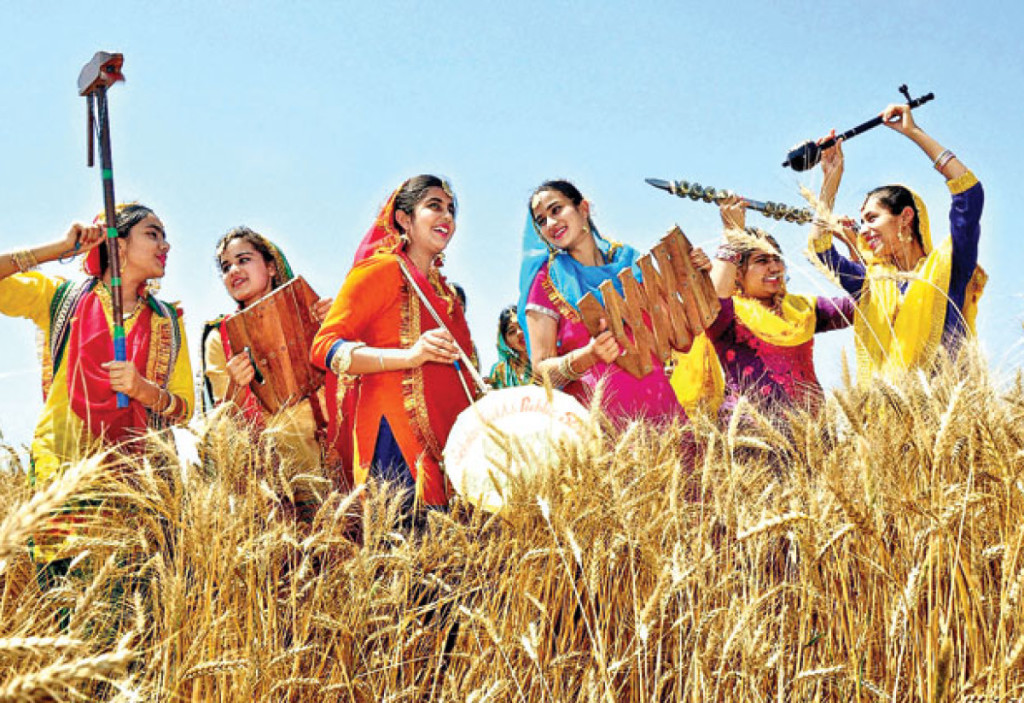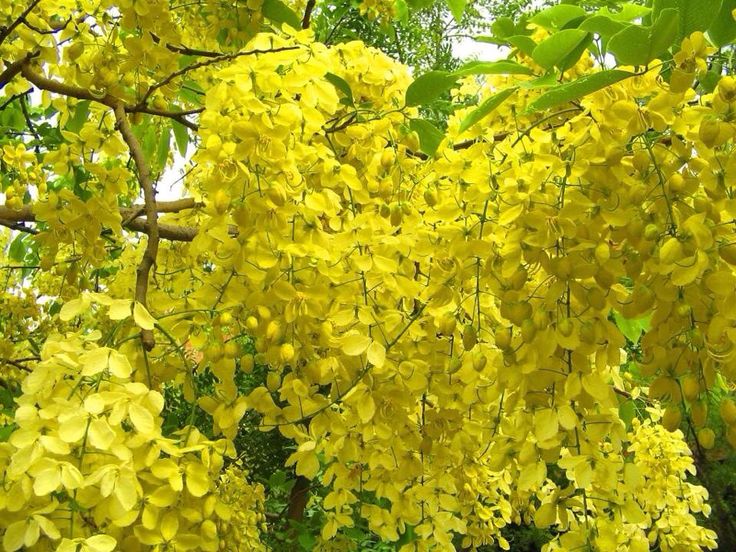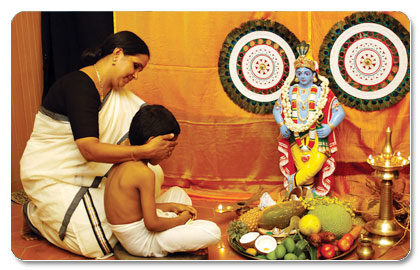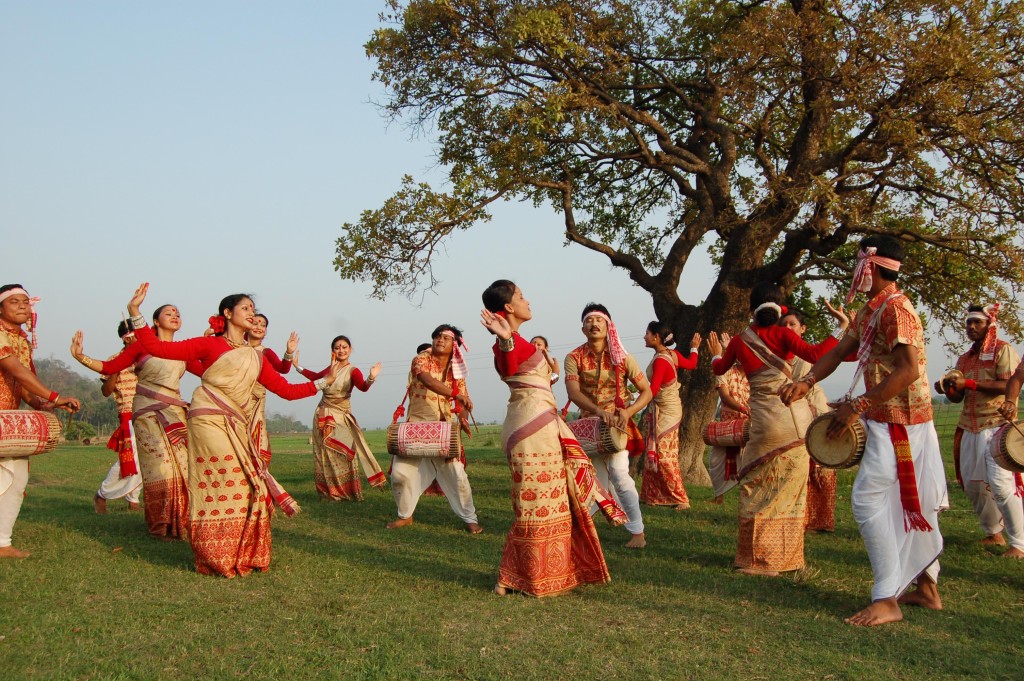Vishu, Baisakhi, Bihu, Poila Boishakh | Indian New Year Celebrations
Mesh Sankranti (Sun’s transit to Aries) harvest festivals held on April 13 and 14 usher in New Year for many communities across India. These festivals are based on Indian Solar Calendar.

Baisakhi – Pretty Punjabi girls celebrating Baisakhi (Punjabi New Year)
April 14 and sometimes April 15 is the first day of the Zodiac calendar. It marks the transit of Sun into Aries. Many Indian states use the Zodiac calendar for determining the dates of various events like religious festivals.
Punbajis celebrate Baisakhi on April 13 or April 14. It is the first day of Vaisakh, the first month of Punjabi calendar. It is their New Year. It is also the day when the Khalsa faith was founded in 1699. The folk dance Bhangra is an essential part of Baisakhi celebrations in Punjab. In addition, fairs are organized all over Punjab to mark the occasion of Baisakhi.

Kani Konna blooms around April. These golden flowers are the first image that comes to the mind of Malayalis when they hear the word Vishu. Such is the popularity of this flower is that it is the State flower of Kerala.
April 14 (sometimes April 15) is the New Year for people of Kerala, Tamil Nadu, Assam and Bengal. On this day, Bengalis celebrate Poila Boishakh, Malayalis celebrate Vishu, Tamilians celebrate Puthandu and Assamese celebrate Bohag Bihu. While these festivals mark the same occasion, they are celebrated in entirely different ways.
Vishu
Malayalis celebrate Vishu by laying out an elaborate Vishukani in the main hall or Pooja room of their home. To prepare the Vishukani, they gather all auspicious items like golden Kanikonna flowers, silver and gold coins and ornaments, fresh fruits (banana, jackfruit, mango etc), new clothes, betel leaves and a mirror. These items are them placed in a silver or bronze basin in front of an idol or photo of Lord Krishna. Nilavilakku (traditional oil lamp) is lit to create a holy ambience. Vishukani is the first thing that Malayalis see on the day of Vishu after waking up. A multi-course vegetarian meal is served at lunchtime.

Vishukani – A Hindu mother gets her son ready to see Vishukani (an auspicious arrangement of Kani Konna flowers, gold coins, fruits and a mirror placed in front of Lord Krishna)
Vishukani is usually prepared by an elder family member on the night before Vishu after other family members have gone to bed. In the morning, s/he will light the oil lamps and wake up other family members. Parents will place their palm on the eyes of children and guide them to this auspicious arrangement. They will open their eyes standing or sitting in front of the Vishukani. Vishukani represents prosperity, abundance and happiness. It is believed that people who start the New Year seeing the Vishukani will be able to enjoy joy and prosperity all year round. Fireworks are another aspect of the celebrations. Children as well as adults burst firecrackers of various kinds late in the evenings and early in the mornings. The bursting of firecrackers will begin several days in advance and may continue for a couple of days after Vishu.
Vishu Kaineettam is another essential aspect of this festival. Parents and grandparents will give money to children and grandchildren. If you visit your friends or relatives on this day, it is customary for you to give money to their children. A large number of Malayalis have migrated to other parts of the country. A lot of them also live abroad. Festivals like Onam and Vishu bring them back to their ancestral homes. Family gatherings are what make these festivals special.
Temples like Guruvayoor Sri Krishna Temple and Sabarimala Ayyappan Temple also lay out Vishukani. Thousands of devotees visit these temples to see this auspicious arrangement.
Bengalis celebrate Poila Boishakh with a feast of rice, hilsa fish, lentils, pickles and payesh.

The energetic Bihu dance is the main attraction of the New Year celebrations in Assam.
In Assam, Bihu dance performances are the most important part of the Bihu festival.